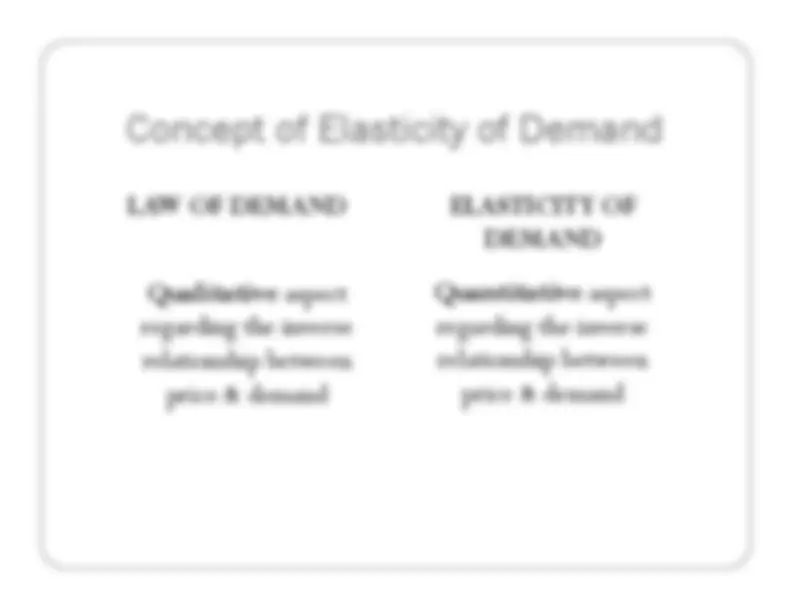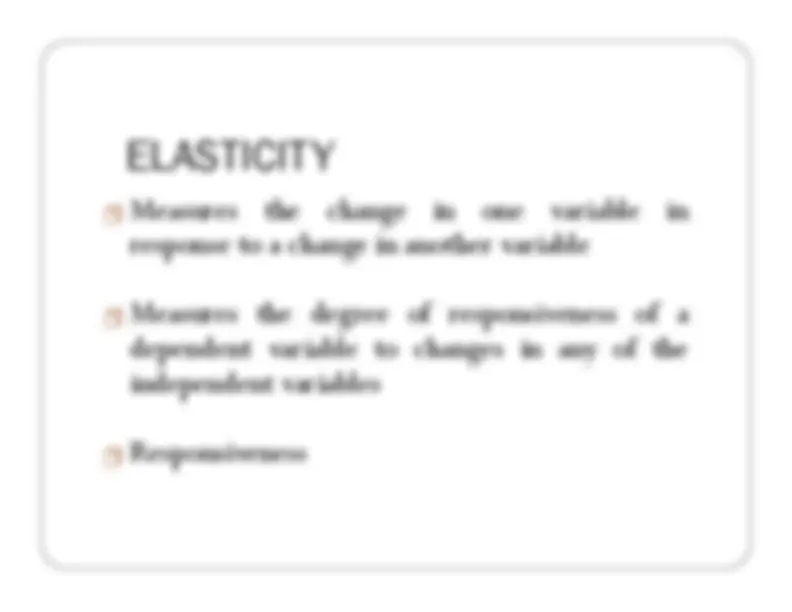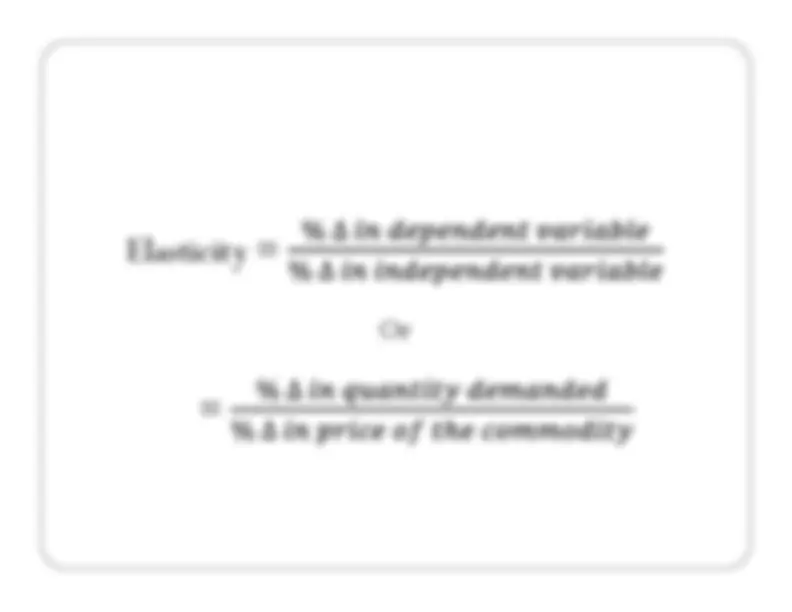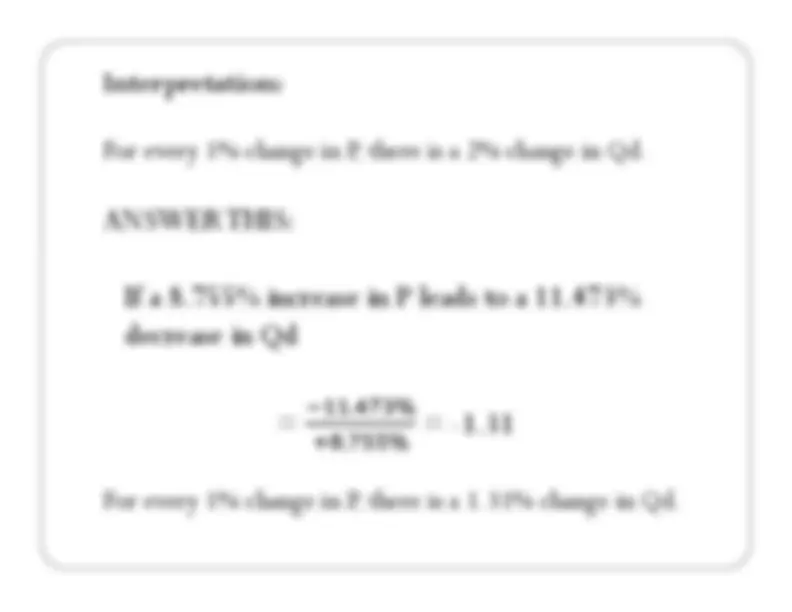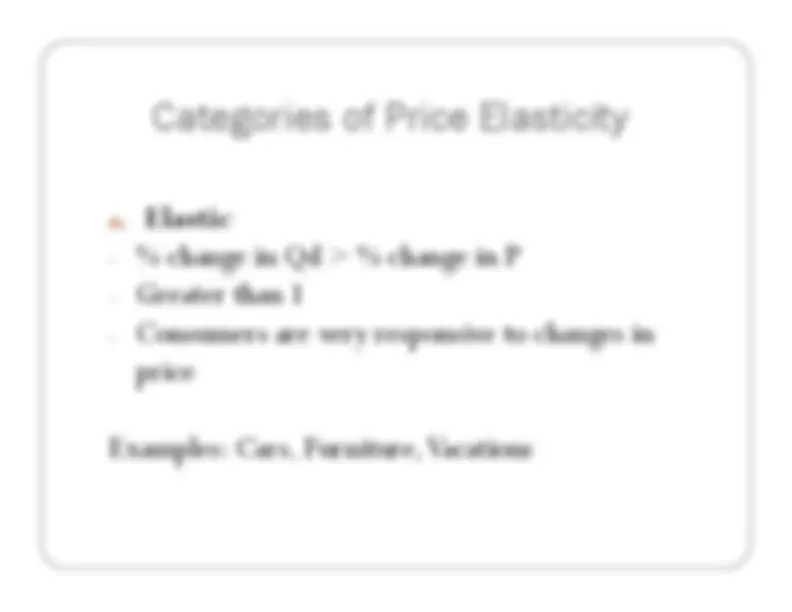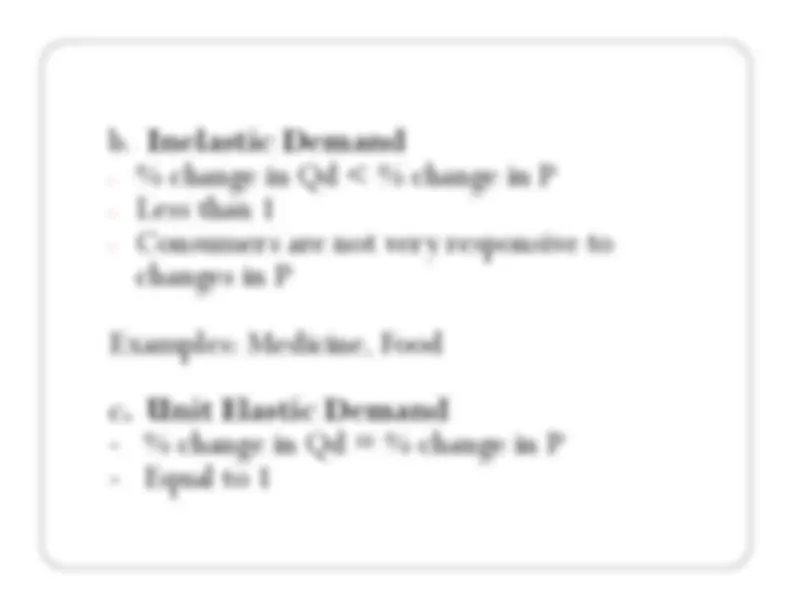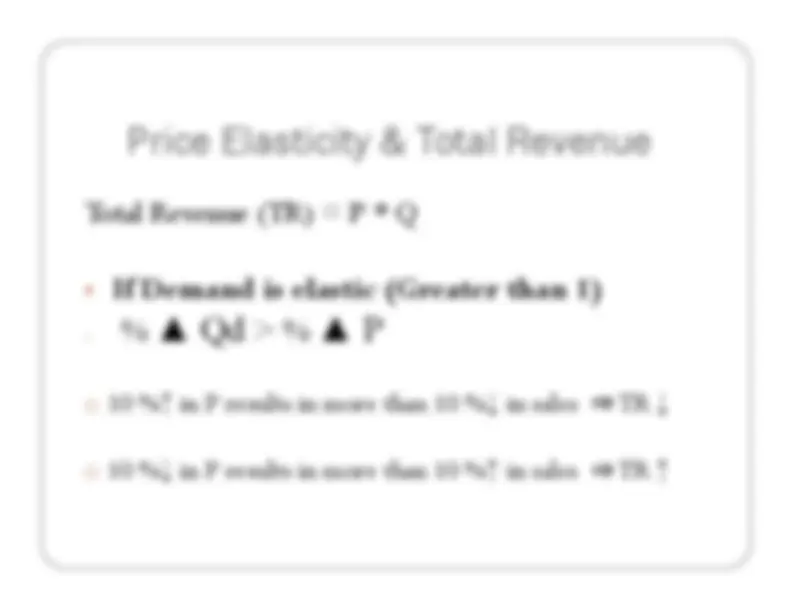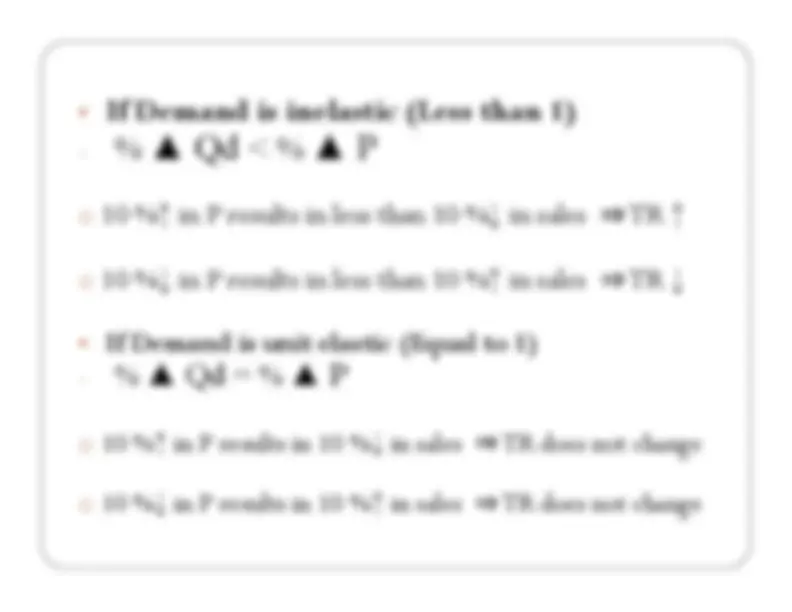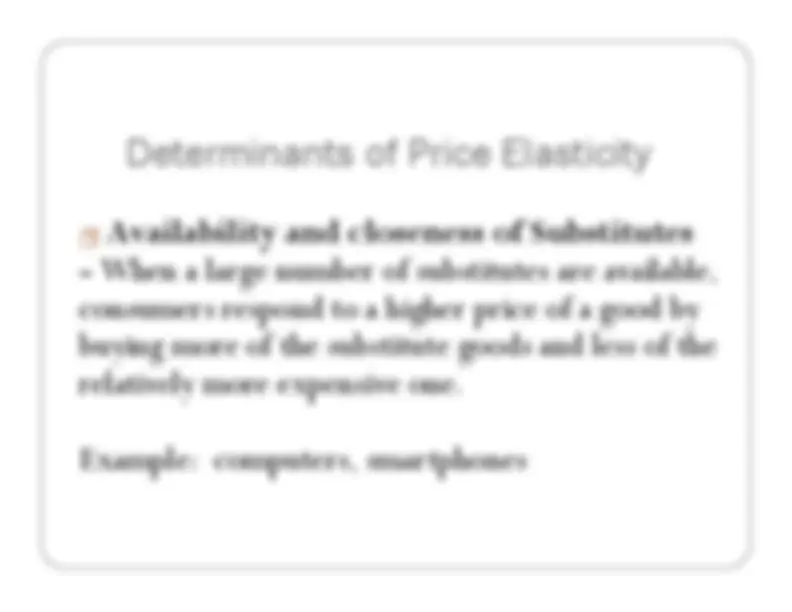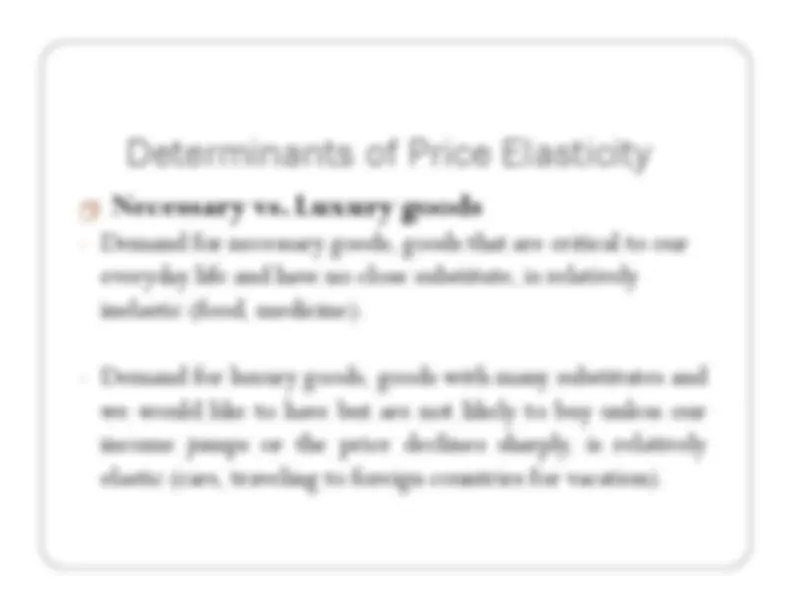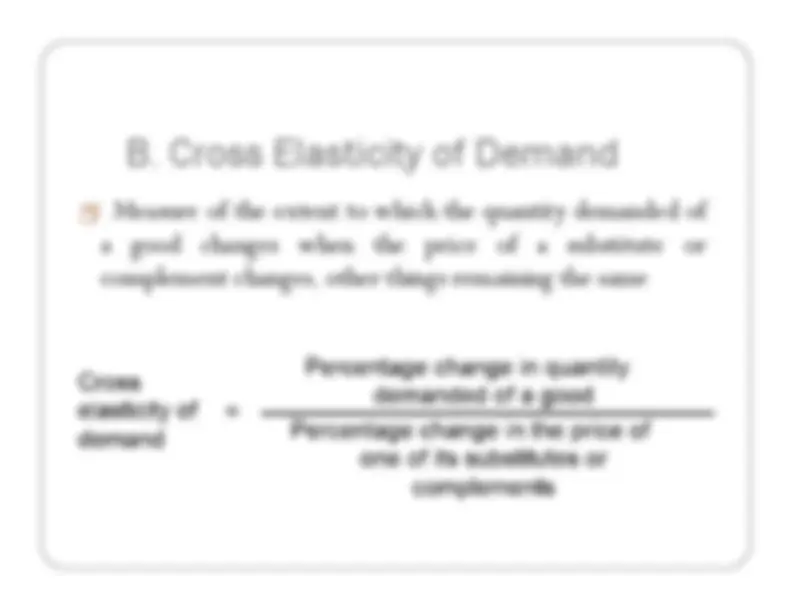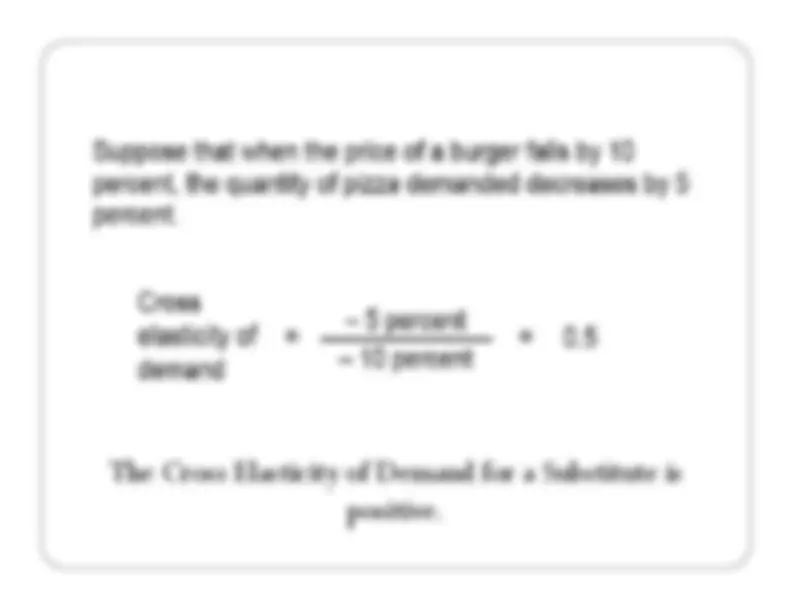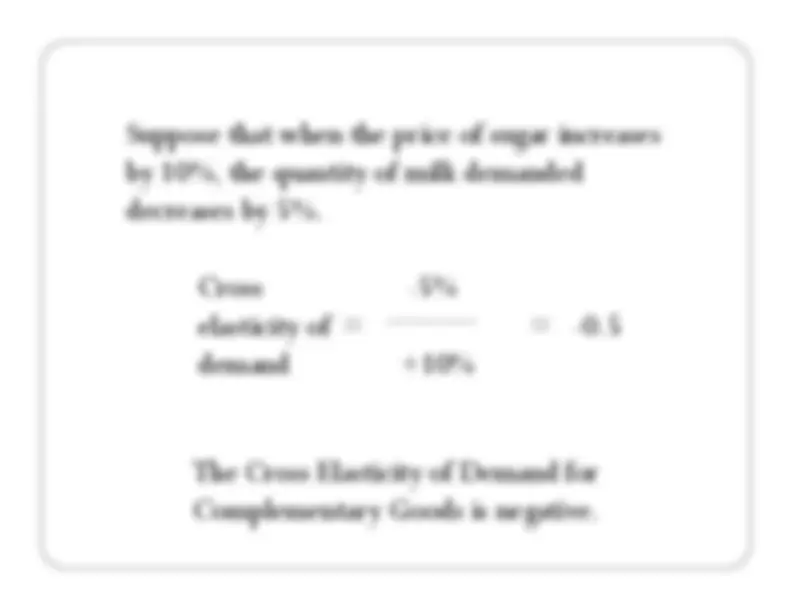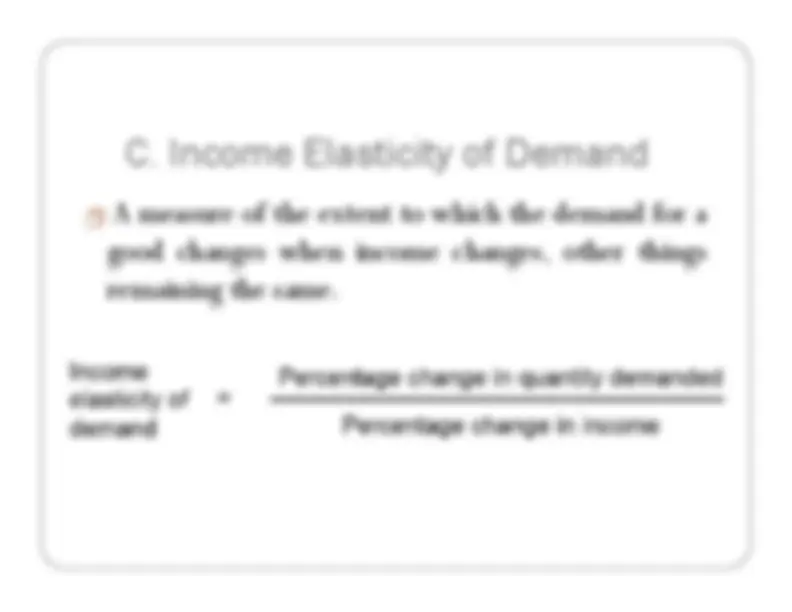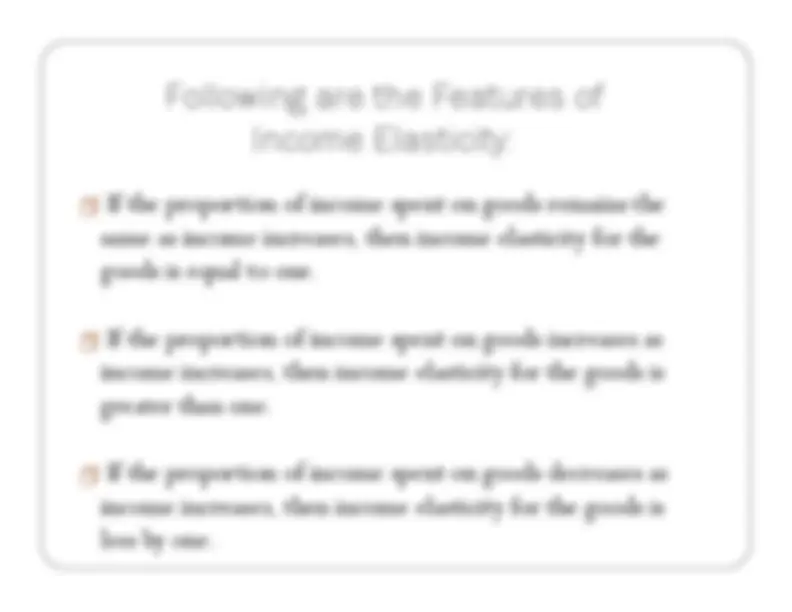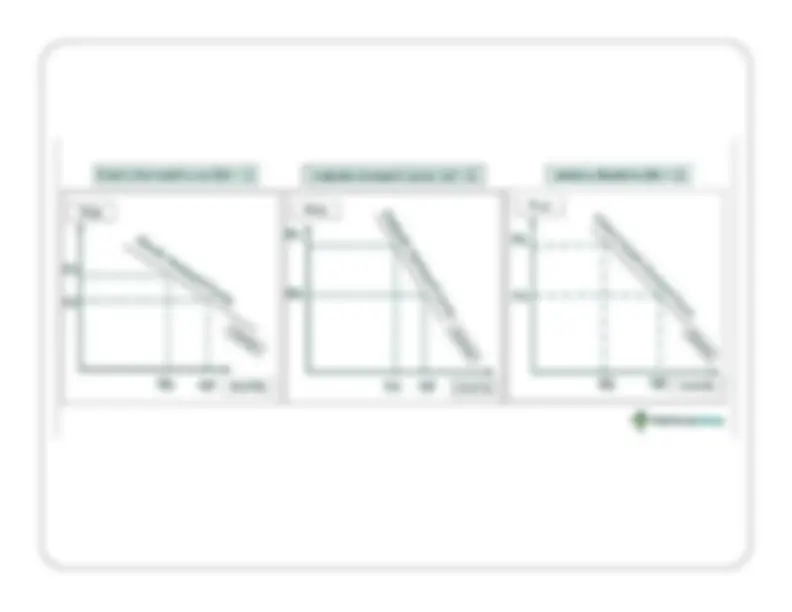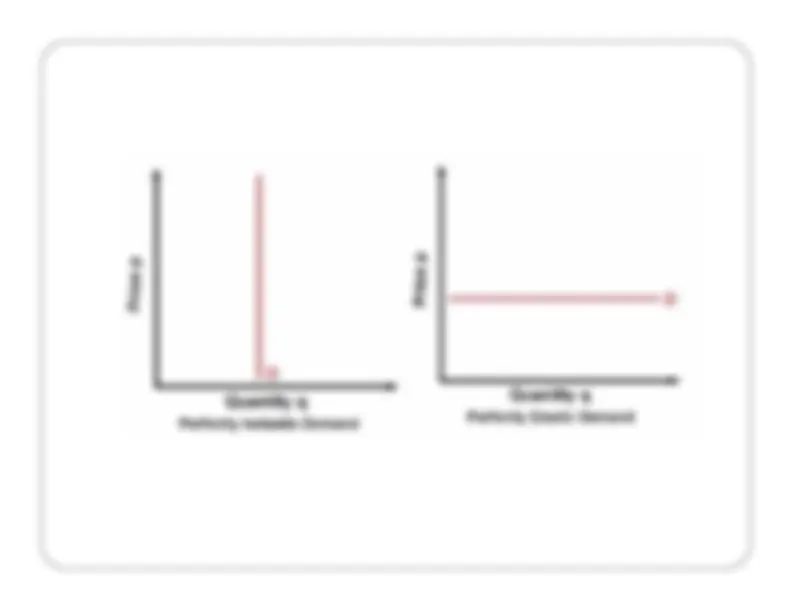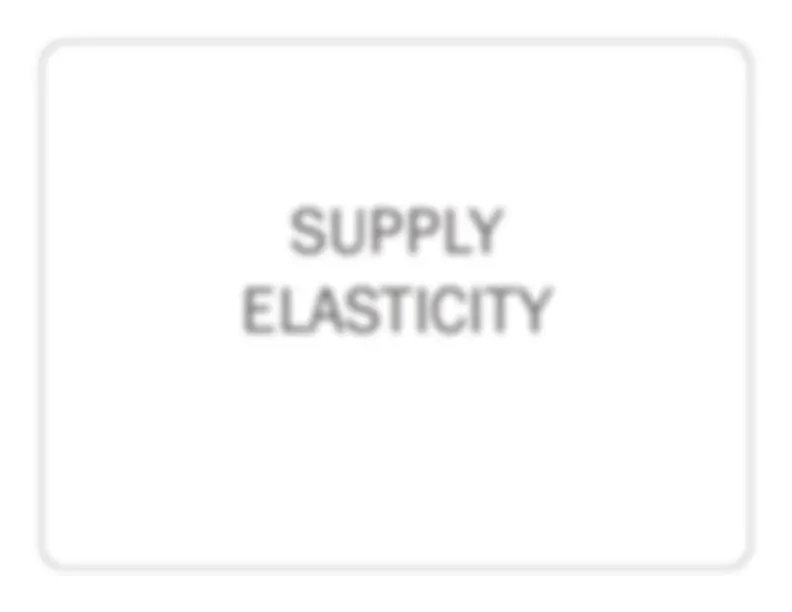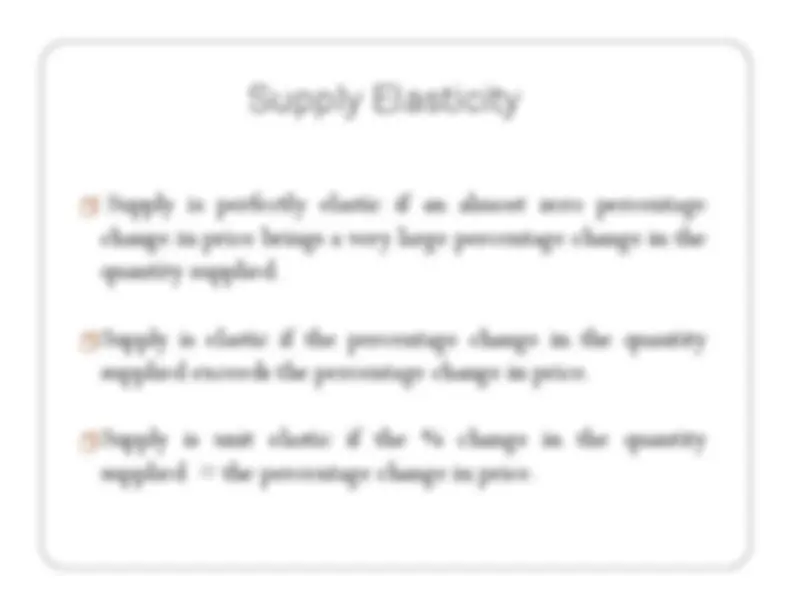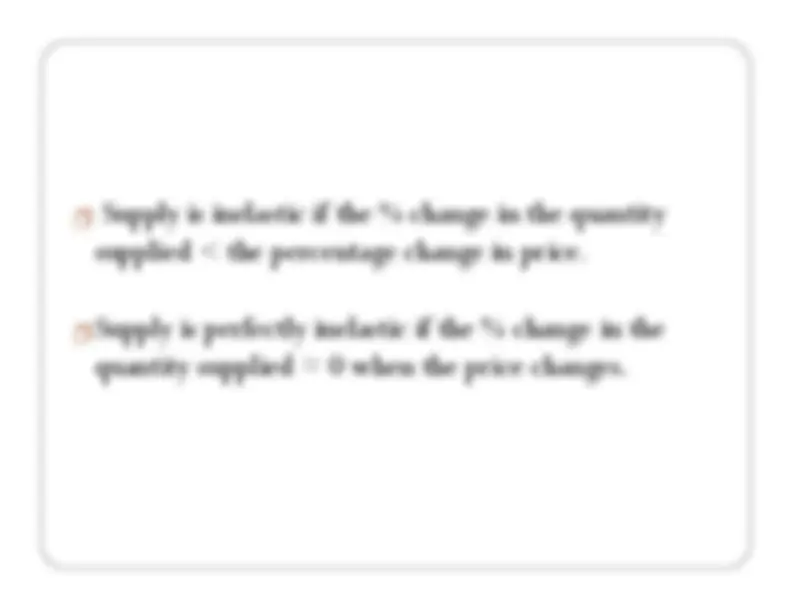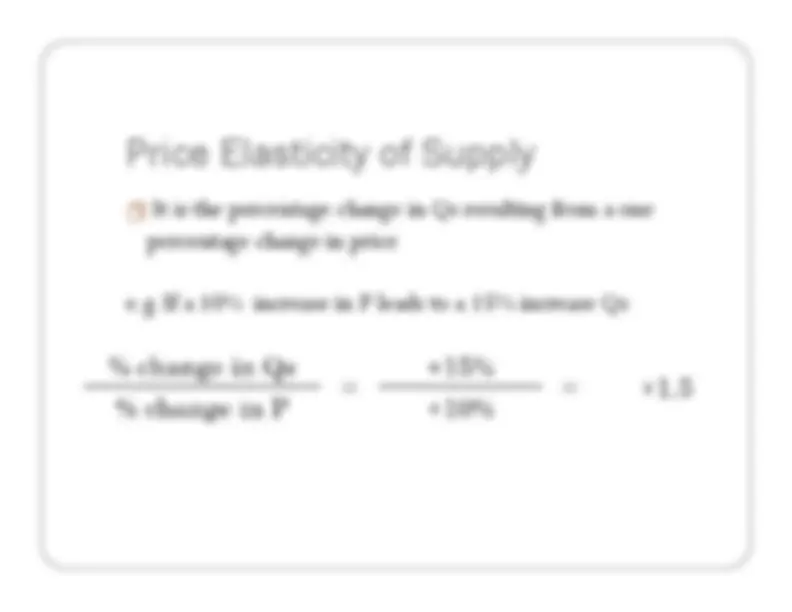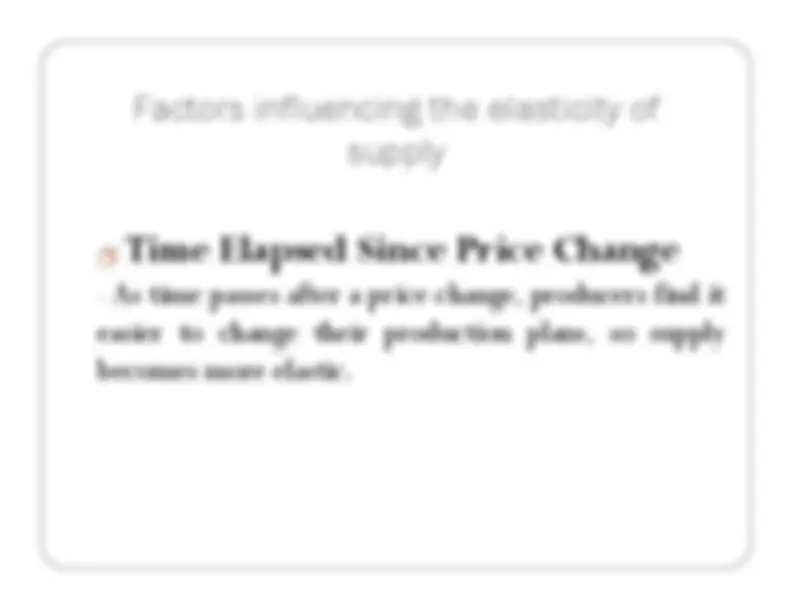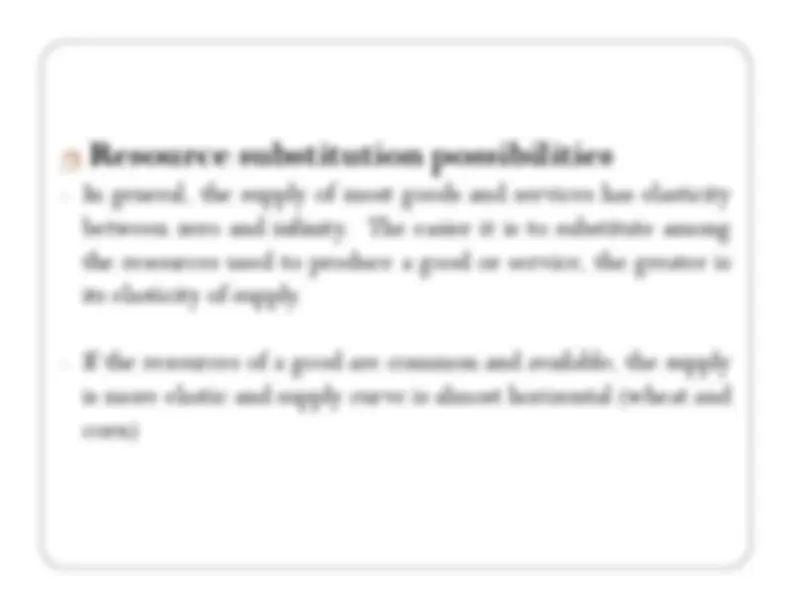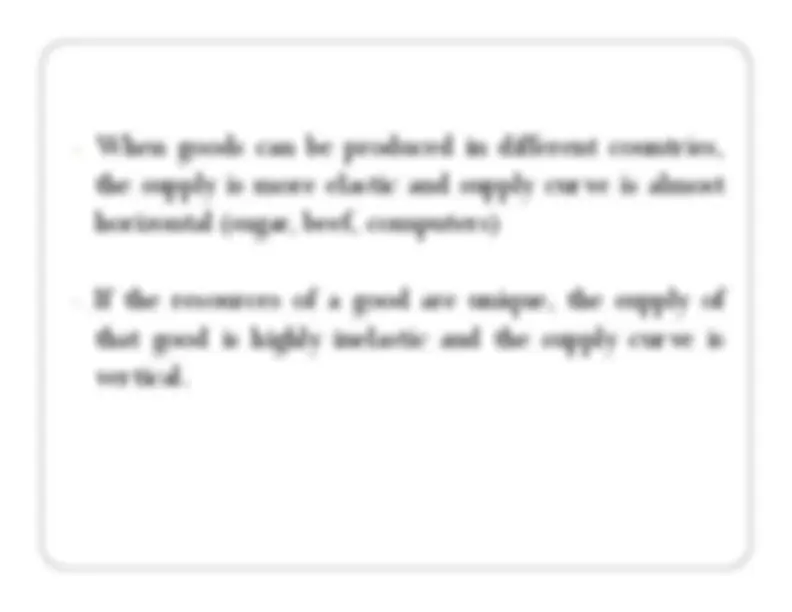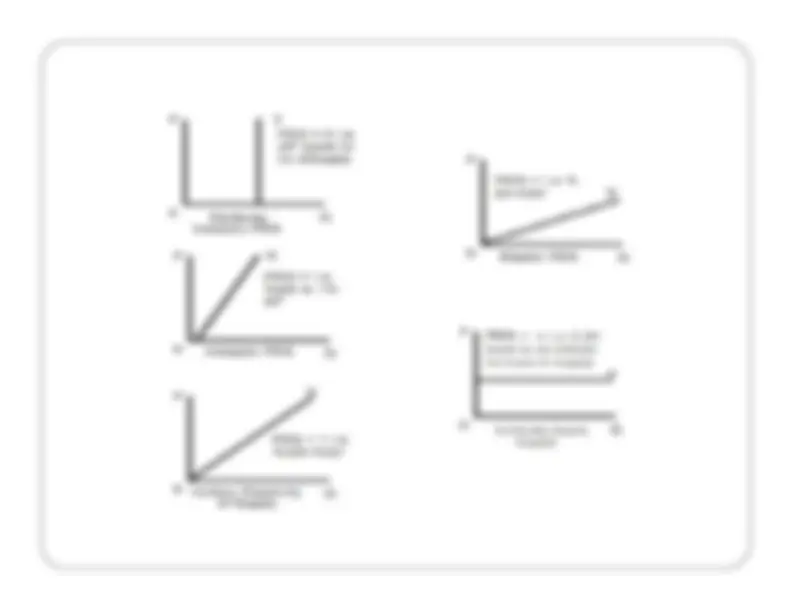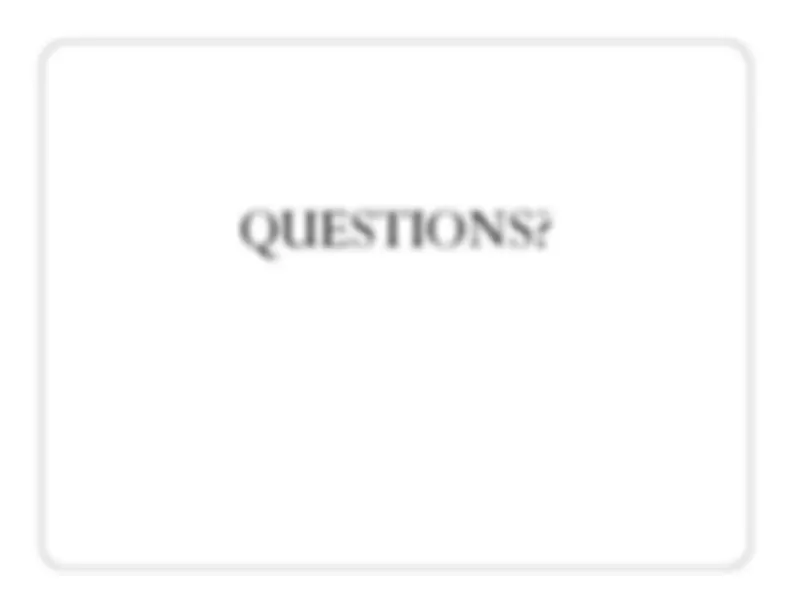Download DEMAND AND SUPPLY ELASTICITY and more Slides Managerial Economics in PDF only on Docsity!
DEMAND AND SUPPLY
ELASTICITY
DEMAND
ELASTICITY
ELASTICITY
Measures the change in one variable in
response to a change in another variable
Measures the degree of responsiveness of a
dependent variable to changes in any of the
independent variables
Responsiveness
Elasticity =
Or
=
Types of Elasticity of Demand
A. Price Elasticity
- The percentage change in quantity demanded to a one percent change in price Example: If a 10% increase in Price leads to a 20% decrease in Quantity Demanded
Interpretation: For every 1% change in P, there is a 2% change in Qd.
ANSWER THIS:
If a 8.755% increase in P leads to a 11.473%
decrease in Qd
For every 1% change in P, there is a 1.31% change in Qd.
b. Inelastic Demand
- % change in Qd < % change in P
- Less than 1
- Consumers are not very responsive to changes in P Examples: Medicine, Food c. Unit Elastic Demand
- % change in Qd = % change in P
- Equal to 1
Two Extreme cases: Perfectly Elastic Demand
- when the Qd changes by a very large percentage in response to an almost zero percentage change in price
- Any price increase would cause demand to fall to zero Examples: Agricultural products, Identical products sold side by side
Price Elasticity & Total Revenue
Total Revenue (TR) = P * Q
- If Demand is elastic (Greater than 1)
- % ▲ Qd > % ▲ P o 10 %↑ in P results in more than 10 %↓ in sales TR ↓ o 10 %↓ in P results in more than 10 %↑ in sales TR ↑
- If Demand is inelastic (Less than 1)
- % ▲ Qd < % ▲ P
o 10 %↑ in P results in less than 10 %↓ in sales TR ↑
o 10 %↓ in P results in less than 10 %↑ in sales TR ↓
- If Demand is unit elastic (Equal to 1)
- % ▲ Qd = % ▲ P o 10 %↑ in P results in 10 %↓ in sales TR does not change o 10 %↓ in P results in 10 %↑ in sales TR does not change
Determinants of Price Elasticity
Proportion of Income Spent on the Good
- The higher the proportion of income spent on the good, the higher the elasticity of demand.
- Expensive good take a greater proportion of an individual’s income than the inexpensive goods; so expensive good are more elastic Example: Pen and Car
Determinants of Price Elasticity
The Time Elapsed Since Price Change
(Length of Time)
- Consumers often have more possibilities for
substitutes for a good when a longer time period is
considered.
Example: Price of gasoline doubles
B. Cross Elasticity of Demand
Measure of the extent to which the quantity demanded of a good changes when the price of a substitute or complement changes, other things remaining the same
The Cross Elasticity of Demand for a Substitute is
positive.

